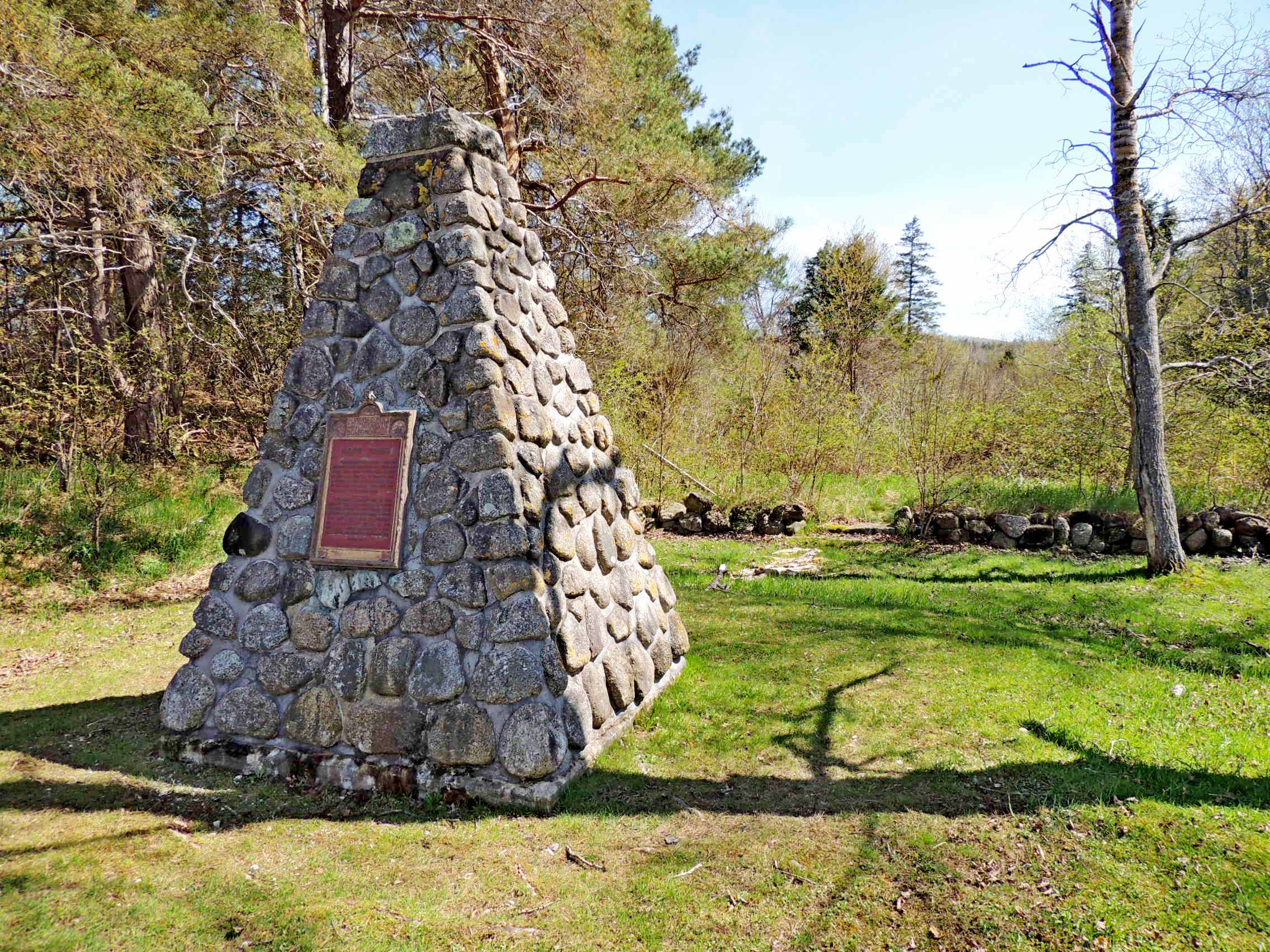|
 Battle of Bloody Creek - Carleton Corner, NS Posted by:  T0SHEA T0SHEA
N 44° 49.345 W 065° 18.576
20T E 317406 N 4965818
Bloody Creek was the second skirmish to take place near Annapolis Royal between British forces and those of an Acadian and Mi'kmaq militia.
Waymark Code: WMTWDN
Location: Nova Scotia, Canada
Date Posted: 01/13/2017
Views: 3
This battle site was marked in 1932 by a stone cairn with a bronze plaque attached. The site is on the south side of Highway 210 at Bloody Creek, .8 kilometres west of Rice Road and 18 kilometres or so northeast of Annapolis Royal. The plaque commemorates both the 1711 and the 1757 battles.
The first battle took place on June 10, 1711 on the banks of the Annapolis River while the second took place here at Bloody Creek, about 18 kilometres, as the crow flies, up the Annapolis River from Annapolis Royal. The second battle took place over 46 years after the first, on December 8, 1757.
Attacked by the French while crossing a small bridge over René Forest River (now Bloody Creek), the British contingent from Fort Royal lost Captain Peter Pigou (the commander of the detachment), a sergeant and 22 soldiers, killed and wounded. Below is a more complete recounting of the battle and the aftermath.
The text from the plaque follows.
BLOODY CREEK
Commemorating two combats between British garrisons of Annapolis Royal and allied French and Indians in the half century of conflict for possession of Acadia: on the north bank of the Annapolis River, 10th June, 1711; and here, 8th December, 1757.

Battle of Bloody Creek
The second combat commemorated in the plaque at Bloody Creek occurred on 8 December 1757 during another period of tension between Acadians and the administrators and garrison at the fort in Annapolis Royal. In 1755, the government of Nova Scotia had deported the Acadians of Annapolis Royal and other major centres of Acadian settlement. Acadian men who had eluded deportation formed a guerilla force which kept the garrison at the fort closely confined, unable to venture out of town without a covering party. This was particularly the case after the 43rd, a British regiment unfamiliar with Nova Scotia, began to garrison the fort in October 1757.
The battle at Bloody Creek on 8 December was precipitated by an attack, two days earlier, on a party sent out from the fort, across the Annapolis River, to cut firewood. A small force of “Frenchmen” killed a grenadier and took several men prisoner, including John Eason, the master carpenter at the fort. A detachment sent out to rescue the men returned empty-handed. Adding insult to injury, the attackers returned and taunted the fort by a firing their muskets in a victorious feu de jeu. A larger detachment was then organized and set out the same evening.
The detachment consisted of two captains, two lieutenants, two ensigns, four sergeants, two drummers and 100 rank and file, supported by approximately 20 volunteers from the fort and town and led by local men, including John Dyson, the Ordnance Storekeeper. John Knox, a lieutenant in the 43rd , gave a first-hand account in his journal. The goal of the detachment was to recover the prisoners and “to give a sensible check to the rabble for their insolence.”
The British force made its way along the south side of the Annapolis River, searching for a place to cross to the other side, where the Acadians and the prisoners were. After two nights and one day of exposure to the cold, wet December weather, and three unsuccessful attempts to ford the river, the detachment began the trek back to the fort. At eleven o’clock, on the morning of 8 December, as the British crossed a narrow, plank bridge over the René Forest River (now Bloody Creek), the French attacked, killing the commanding officer.
After some confusion and cries of “retreat,” the last of the men fought their way across the bridge, to face more fire from a make-shift battery on the other side. The attackers then fled, pursued briefly by the soldiers. Afraid that they would be attacked again further ahead, the British hurried back to Annapolis Royal, leaving most of the dead and wounded behind. Knox reported that the losses amounted to Captain Peter Pigou (the commander of the detachment), a sergeant and 22 soldiers.
Seven months later, in July 1758, some of the prisoners from the firewood party, who had escaped from their captors, arrived at Fort Cumberland, on the Isthmus of Chignecto. A letter from an officer at the fort provided details of the attacks, as told by the prisoners. They stated that the attackers of 6 December numbered about 15 while those of 8 December numbered about 56. The latter consisted of a party that was in the area in search of cattle and provisions. After ambushing the detachment, which greatly outnumbered them, the “enemy” had continued to fight, encouraged by the frightened cries of “retreat.”
According to the prisoners, seven of the attackers had been killed and nine wounded. The officer claimed that none of the wounded left behind by the British had been brought back as prisoners, so apparently had been killed. William Johnson (Guillaume Jeanson), whose father had been in the British garrison at Annapolis Royal and whose mother was Acadian, was said to have been the leader of the attackers.
From Parks Canada
![]()
Type of Historic Marker: Canadian National Historic Event

Historical Marker Issuing Authority: Government of Canada

Age/Event Date: 12/08/1757

Related Website: [Web Link]

Give your Rating: 

|
Visit Instructions:
Please submit your visiting log with a picture of the object and include some interesting information about your visit.
|